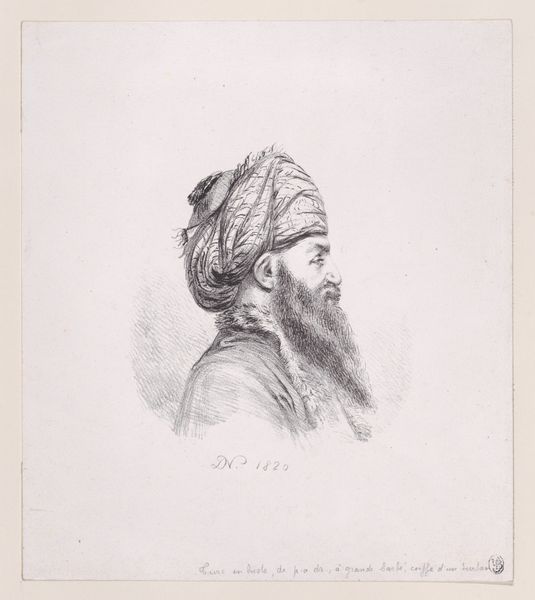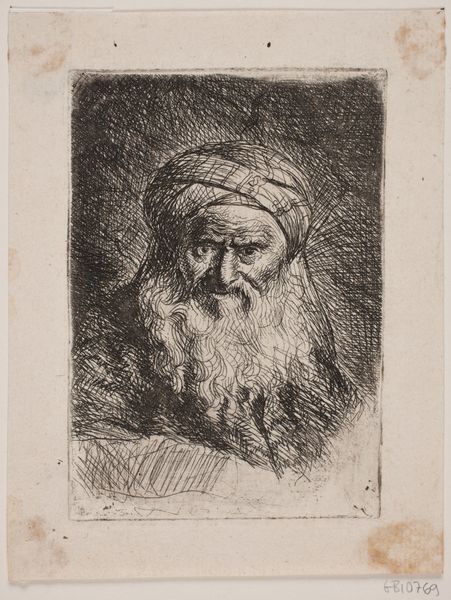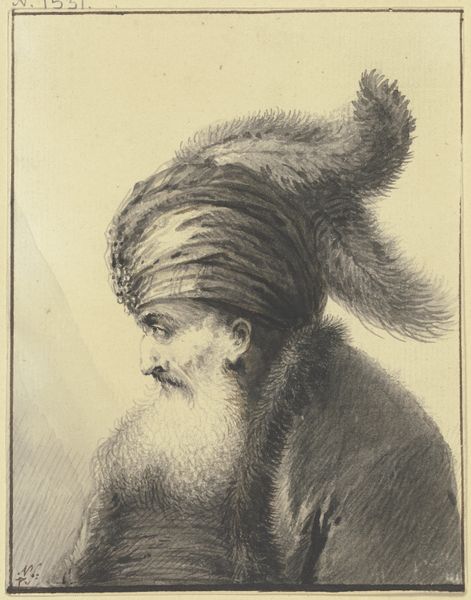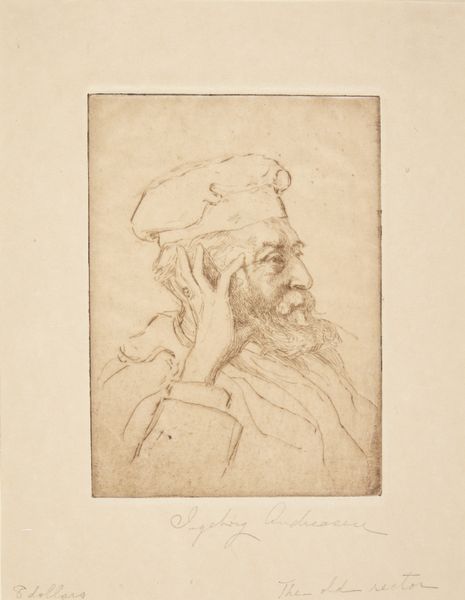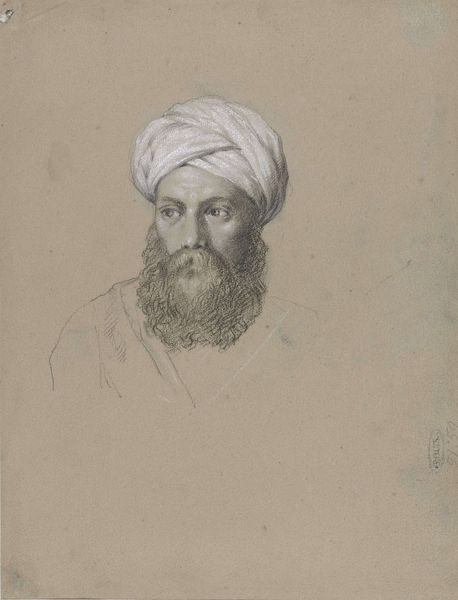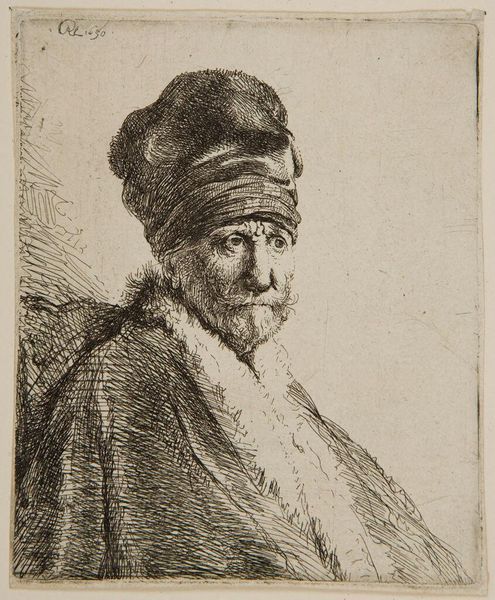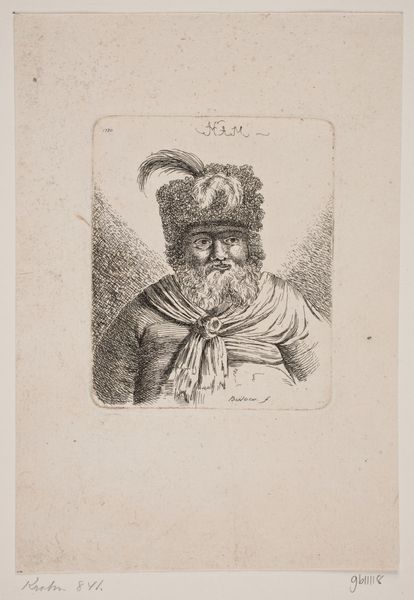
Plate 12: bust of an old Turkish man in a turban, looking towards the left, from 'Various heads and figures' (Diverses têtes et figures) 1650
0:00
0:00
drawing, print, ink
#
portrait
#
drawing
#
baroque
# print
#
ink
Dimensions: Sheet: 3 5/16 x 2 1/2 in. (8.4 x 6.4 cm)
Copyright: Public Domain
Editor: This is "Plate 12: bust of an old Turkish man in a turban" by Stefano della Bella, dating back to 1650. It’s a drawing, rendered in ink. It’s simple in its execution, almost like a quick sketch, but it carries a quiet sense of dignity. What stands out to you? Curator: Indeed. If we focus on formal elements, observe the artist’s confident linework. The hatching technique sculpts the face and turban, conveying both texture and volume with remarkable economy. Notice how the direction and density of the lines suggest form, light, and shadow. Do you observe the construction of the turban itself, how it suggests depth and roundness, a careful attention to semiotics that helps it “read” correctly as a turban? Editor: I see what you mean, the lines really build up the volume without being overly detailed. But it’s more than just descriptive, right? Curator: Precisely. It's not merely descriptive but highly evocative. The artist, rather than seeking literal likeness, is interested in compositional balance: the textured treatment of the head is visually contrasted by a looser, less dense handling of the shoulders, allowing for an openness. He’s concerned with rendering the essence of the figure, its internal construction rather than simply its outer appearance. It transcends pure portraiture. The very material – the ink and paper – collaborate in creating the image, an interplay of dark and light. Editor: So, it's more about the arrangement and execution of lines than a pure likeness of someone? Curator: Exactly. The artist uses these formal means—line, form, composition, texture—to evoke something deeper than a surface representation. Editor: This perspective really makes me appreciate the skill and intent behind seemingly simple lines. Thank you for sharing your insight. Curator: And thank you for prompting this consideration of form.
Comments
No comments
Be the first to comment and join the conversation on the ultimate creative platform.
